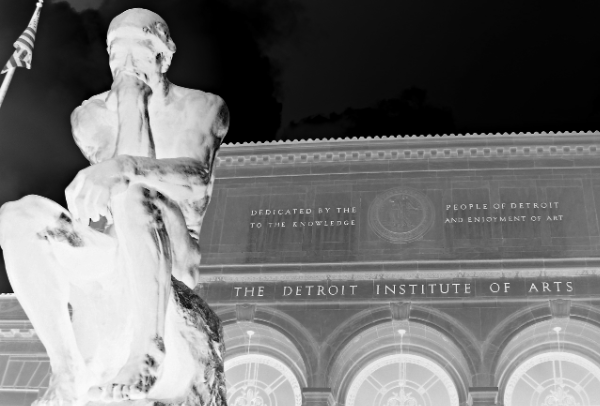It’s priceless art, not an “asset”

The Detroit Free Press is reporting this afternoon that Financial Guaranty Insurance Co. has filed paperwork with the federal bankruptcy court overseeing Detroit’s bankruptcy showing that several four separate investors have made bids on the priceless art collection held by the Detroit Institute of Arts worth billions of dollars.
A financial insurance giant that will shoulder steep losses if the City of Detroit’s restructuring proposal proceeds said it has lined up tentative bids of $2 billion for the Detroit Institute of Arts or a portion of its collection in a maneuver designed to pressure the city to sell artwork to pay off debt.Financial Guaranty Insurance Co. filed documents in U.S. Bankruptcy Court showing that four investors responded to the bond insurer’s request for DIA bids. The insurer asked Judge Steven Rhodes to force the city to cooperate with the potential art investors.
The prospective investors include a coalition of Catalyst Acquisitions and Bell Capital Partners that tentatively offered $1.75 billion for all of the DIA’s property.
The bids also includes two Asian investors, including Beijing-based Poly International Auction, which tentatively offered up to $1 billion for the DIA’s Chinese art collection.
The banks are trying to persuade Judge Rhodes to sell of the art so that they don’t have to take a loss on the money they are owed by the city.
The banks are in this position because they made the loans and sold the bonds to the city believing they were completely protected from any losses if the city went bankrupt. So they continued to lend even as the city sank deeper and deeper into financial trouble. That wasn’t their concern. At least not until Emergency Manager Kevyn Orr put ALL creditors’ debt on the table.
One of the reasons that I have been in favor of bankruptcy from Detroit is because bankruptcy judges cannot force the city to sell its assets. This is an example of how that part of the law can protect the city from selling off a holding that is both self-sustaining and a financial draw for the city.
From Annmarie Erickson, executive vice president and chief operating officer of the DIA:
How much help would the emergency manager like from the DIA? The number we have heard is $500 million. And how is the DIA to come up with a half-billion dollars? Rent art. Ask your donors. Sell some art. The DIA has carefully explored those suggestions, and none will satisfy the city’s hunger for cash without dismantling the museum. […]The biggest irony of all is that our incredible art museum doesn’t cost the city of Detroit a dime. The museum is managed by a nonprofit, responsible for all operations. Unlike Detroit, the DIA changed its retiree health care plan years ago. We reduced our work force, eliminated an expensive pension plan, and did all this in cooperation with our unionized staff. All this work keeps $31 million off Detroit’s books every year and brings hundreds of thousands of visitors to Midtown. Orr touts the Belle Isle deal for saving Detroit $6 million. Somehow, he has missed that the DIA provides more than five times as much value to Detroit as the Belle Isle deal.
Some would paint this as a choice between art and pensioners. I would disagree and it is my hope that both the art and the pensioners will be largely protected. The large banks and their insurance companies made a bad investment and it should be them that pay the price for that lousy investment. Not the innocent Detroit pension holders and not by forcing Detroit to eat its seed corn by selling the precious art that it holds in trust for the entire state of Michigan.



